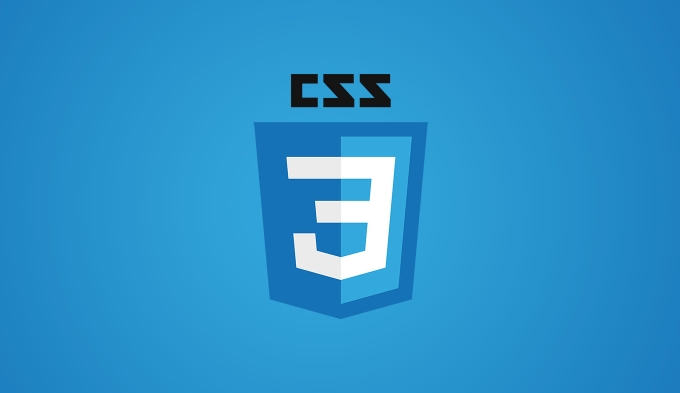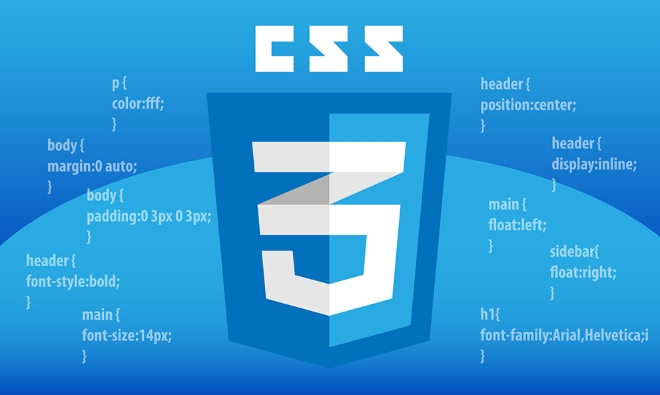The aspect-ratio attribute of CSS is used to set the aspect ratio of an element, such as 16:9 or 4:3, so that the browser automatically calculates the height or width based on the proportion. Common usage scenarios include: 1. Keep the proportion of the picture container to avoid deformation; 2. The video embedding is more stable without padding skills; 3. The unified cell proportion in the grid layout. Notes include: After setting width and height, aspect-ratio may fail. Pay attention to browser compatibility and adjust the image display effect with object-fit.

aspect-ratio attribute of CSS allows you to easily control the aspect ratio of elements, avoiding the use of padding hack or JS to implement responsive layouts. It is especially useful in picture, video containers and grid layouts.

What is aspect-ratio?
The role of aspect-ratio is to set the aspect ratio of an element, such as 16:9 or 4:3. The browser will automatically calculate the height or width based on this scale, depending on whether you have set the dimensions in one of the directions.

Let's give the simplest example:
.box {
aspect-ratio: 16 / 9;
} In this way, no matter what the width of .box is, its height will automatically be adjusted to a ratio of 16:9.

Common usage scenarios
Picture container maintains proportion
When making responsive web pages, images often cause the layout to "deform". You can add aspect-ratio to the image container so that it always maintains a fixed proportion.
.image-container {
aspect-ratio: 4 / 3;
overflow: hidden;
}
.image-container img {
width: 100%;
height: 100%;
object-fit: cover;
}This way, the container can be filled without being stretched regardless of the original size of the picture.
Video embedding is more stable
Many websites use padding techniques to maintain proportions when embedding videos. Now you can directly use aspect-ratio to simplify the code.
.video-wrapper {
aspect-ratio: 16 / 9;
} Just put <iframe> in HTML, and you don’t have to write extra styles to expand the height.
Uniform proportion of cells in grid layout
In a CSS Grid layout, you can also use it in combination with aspect-ratio if you want each grid item to remain the same proportion (such as a gallery page).
.grid-item {
aspect-ratio: 1;
}In this way, each grid item is a square and will not be deformed due to different contents.
Notes and compatibility
- Priority issue : If you set
widthandheightat the same time,aspect-ratiomay be ignored. It will work when only one direction size is set. - Browser support : Mainstream modern browsers are already supported, including Chrome, Edge, Firefox, and Safari (starting around 2022). If you need to be compatible with the old version of IE, you still have to use the padding solution.
- What should I do if the ratio conflicts with the picture itself? If the image itself has an aspect ratio but the parent container has
aspect-ratioset, cropping or white space may occur. At this time, remember to adjust the display effect withobject-fitorobject-position.
Basically that's it. aspect-ratio is a very practical but easily overlooked property, especially in responsive design, which can save a lot of trouble. It is not complicated to use, just pay attention to its working mechanism and scope of application.
The above is the detailed content of Using the CSS aspect-ratio property. For more information, please follow other related articles on the PHP Chinese website!

Hot AI Tools

Undress AI Tool
Undress images for free

Undresser.AI Undress
AI-powered app for creating realistic nude photos

AI Clothes Remover
Online AI tool for removing clothes from photos.

Clothoff.io
AI clothes remover

Video Face Swap
Swap faces in any video effortlessly with our completely free AI face swap tool!

Hot Article

Hot Tools

Notepad++7.3.1
Easy-to-use and free code editor

SublimeText3 Chinese version
Chinese version, very easy to use

Zend Studio 13.0.1
Powerful PHP integrated development environment

Dreamweaver CS6
Visual web development tools

SublimeText3 Mac version
God-level code editing software (SublimeText3)
 CSS tutorial for creating loading spinners and animations
Jul 07, 2025 am 12:07 AM
CSS tutorial for creating loading spinners and animations
Jul 07, 2025 am 12:07 AM
There are three ways to create a CSS loading rotator: 1. Use the basic rotator of borders to achieve simple animation through HTML and CSS; 2. Use a custom rotator of multiple points to achieve the jump effect through different delay times; 3. Add a rotator in the button and switch classes through JavaScript to display the loading status. Each approach emphasizes the importance of design details such as color, size, accessibility and performance optimization to enhance the user experience.
 Addressing CSS Browser Compatibility issues and prefixes
Jul 07, 2025 am 01:44 AM
Addressing CSS Browser Compatibility issues and prefixes
Jul 07, 2025 am 01:44 AM
To deal with CSS browser compatibility and prefix issues, you need to understand the differences in browser support and use vendor prefixes reasonably. 1. Understand common problems such as Flexbox and Grid support, position:sticky invalid, and animation performance is different; 2. Check CanIuse confirmation feature support status; 3. Correctly use -webkit-, -moz-, -ms-, -o- and other manufacturer prefixes; 4. It is recommended to use Autoprefixer to automatically add prefixes; 5. Install PostCSS and configure browserslist to specify the target browser; 6. Automatically handle compatibility during construction; 7. Modernizr detection features can be used for old projects; 8. No need to pursue consistency of all browsers,
 What is the difference between display: inline, display: block, and display: inline-block?
Jul 11, 2025 am 03:25 AM
What is the difference between display: inline, display: block, and display: inline-block?
Jul 11, 2025 am 03:25 AM
Themaindifferencesbetweendisplay:inline,block,andinline-blockinHTML/CSSarelayoutbehavior,spaceusage,andstylingcontrol.1.Inlineelementsflowwithtext,don’tstartonnewlines,ignorewidth/height,andonlyapplyhorizontalpadding/margins—idealforinlinetextstyling
 Creating custom shapes with css clip-path
Jul 09, 2025 am 01:29 AM
Creating custom shapes with css clip-path
Jul 09, 2025 am 01:29 AM
Use the clip-path attribute of CSS to crop elements into custom shapes, such as triangles, circular notches, polygons, etc., without relying on pictures or SVGs. Its advantages include: 1. Supports a variety of basic shapes such as circle, ellipse, polygon, etc.; 2. Responsive adjustment and adaptable to mobile terminals; 3. Easy to animation, and can be combined with hover or JavaScript to achieve dynamic effects; 4. It does not affect the layout flow, and only crops the display area. Common usages are such as circular clip-path:circle (50pxatcenter) and triangle clip-path:polygon (50%0%, 100 0%, 0 0%). Notice
 Styling visited links differently with CSS
Jul 11, 2025 am 03:26 AM
Styling visited links differently with CSS
Jul 11, 2025 am 03:26 AM
Setting the style of links you have visited can improve the user experience, especially in content-intensive websites to help users navigate better. 1. Use CSS's: visited pseudo-class to define the style of the visited link, such as color changes; 2. Note that the browser only allows modification of some attributes due to privacy restrictions; 3. The color selection should be coordinated with the overall style to avoid abruptness; 4. The mobile terminal may not display this effect, and it is recommended to combine it with other visual prompts such as icon auxiliary logos.
 How to create responsive images using CSS?
Jul 15, 2025 am 01:10 AM
How to create responsive images using CSS?
Jul 15, 2025 am 01:10 AM
To create responsive images using CSS, it can be mainly achieved through the following methods: 1. Use max-width:100% and height:auto to allow the image to adapt to the container width while maintaining the proportion; 2. Use HTML's srcset and sizes attributes to intelligently load the image sources adapted to different screens; 3. Use object-fit and object-position to control image cropping and focus display. Together, these methods ensure that the images are presented clearly and beautifully on different devices.
 Demystifying CSS Units: px, em, rem, vw, vh comparisons
Jul 08, 2025 am 02:16 AM
Demystifying CSS Units: px, em, rem, vw, vh comparisons
Jul 08, 2025 am 02:16 AM
The choice of CSS units depends on design requirements and responsive requirements. 1.px is used for fixed size, suitable for precise control but lack of elasticity; 2.em is a relative unit, which is easily caused by the influence of the parent element, while rem is more stable based on the root element and is suitable for global scaling; 3.vw/vh is based on the viewport size, suitable for responsive design, but attention should be paid to the performance under extreme screens; 4. When choosing, it should be determined based on whether responsive adjustments, element hierarchy relationships and viewport dependence. Reasonable use can improve layout flexibility and maintenance.
 What are common CSS browser inconsistencies?
Jul 26, 2025 am 07:04 AM
What are common CSS browser inconsistencies?
Jul 26, 2025 am 07:04 AM
Different browsers have differences in CSS parsing, resulting in inconsistent display effects, mainly including the default style difference, box model calculation method, Flexbox and Grid layout support level, and inconsistent behavior of certain CSS attributes. 1. The default style processing is inconsistent. The solution is to use CSSReset or Normalize.css to unify the initial style; 2. The box model calculation method of the old version of IE is different. It is recommended to use box-sizing:border-box in a unified manner; 3. Flexbox and Grid perform differently in edge cases or in old versions. More tests and use Autoprefixer; 4. Some CSS attribute behaviors are inconsistent. CanIuse must be consulted and downgraded.






